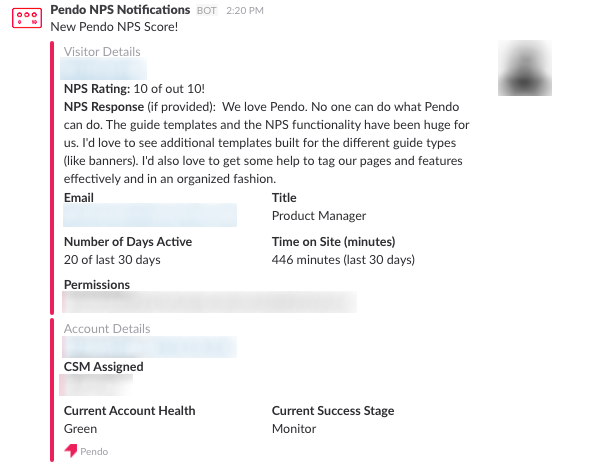
Net Promoter Score is used in over two-thirds of fortune 1000 companies today. It’s one of the most important metrics to be tracked by customer success teams, product teams, and for executives looking to raise capital. With so much hype around the metric, and the ease of execution of the survey, many companies are giving NPS surveys to customers without thinking through a strategy that will deliver actionable insights for their business.
While the system itself is simple, the approach should be thoughtful. It’s important to consider both how customers will be prompted with NPS as well as how you will react to the data.
What’s your goal?
Determining a realistic goal for NPS can be challenging. It’s important to ensure NPS is kept top of mind for your team. So, what’s a good score? Scores can vary greatly depending on type of business. As a general rule, anything above a zero can be considered a decent score while above 50 is excellent ( more about NPS scores).
How Will You Ask?
NPS is only one to two questions in length, so it’s important that customers are asked in a meaningful way. We’ve found that the most effective way to get honest feedback is when your product is top of mind for the customer. When they’re in your application. Prompting users with a banner or pop-up while they’re inside the application will not only increase response rates but can also solicit more honest and actionable feedback. Check out the results of a test we conducted to learn the best method of delivery to increase response rates.
Who Will You Ask?
Using segmentation is important not only as a diversifier for your score, but also to keep their in-app experience at the forefront. It provides an opportunity to survey different types of users in your application. This will ensure that you’re hearing the full story of user happiness over time.
How long will you run the program?
When determining how long an NPS program will run, the customer experience should be considered. It’s not necessary to ask the same customer the same question too often, but their opinion should be checked with occasionally. By setting a timeline for program length, you are also creating more concrete expectations for your NPS strategy. For example, making a commitment for your team to test the program for 12 months will guarantee that you’re consistent in tracking results for that time frame.
How Will You Communicate Results to Your Team?
Most companies put the responsibility of NPS on their customer success or services teams. It seems like the obvious approach, but many departments can benefit from NPS feedback. At Pendo, we use a Slack integration via Pendo’s Zapier integration to communicate results to the entire company.

What’s Your Follow-Up Plan?
Each customer base is different, and each success team has a different method for responding to feedback. It’s important to develop a strategy that is used across your company to respond to all NPS feedback. This process may include calling each Detractor to analyze their experience and track improvements. It could also mean that their CS rep simply studies a customer’s activities in the product to discover blockers and feature usage.
And we can’t forget about those Promoters and Passives. Passive responses are an easy way for teams to discover small issues that could be easily fixed. Promoters can do exactly what their name says- promote your business to others in their space. Your follow-up process should include ways that they can impactfully advocate for your product.
NPS is an excellent means for SaaS companies and others with recurring revenue to gain insights about customers they don’t speak with regularly. The key is to make sure that your customer’s responses don’t fall on deaf ears, and that your team is prepared with an NPS game plan.
